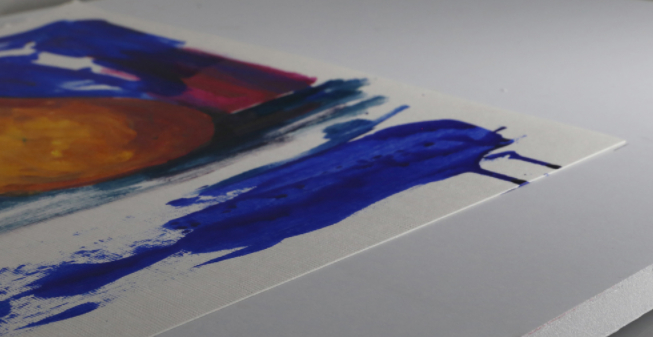When working with acrylic paints, there is a little chance you don’t have leftover paint. There’s always something left even when you think you’re done. You can’t just throw or flush down this leftover paint into the drain. Before disposing of acrylic paints, it is crucial to keep in mind environmental safety.
If you never want to use it, you can dispose of the remaining paint in different ways. So, what are you thinking? Fortunately, disposing of acrylic paint is actually a very simple task. We will tell you three different ways to dispose of acrylic paint in this context.
Can Acrylic Paint Be Recyclable?
In general, water-based paints, such as acrylics, can be easily recycled. Among the most donated or recycled paints, acrylic is quite popular. But you should follow some things to keep your paint recyclable. For example, make sure you store the paint in a dry and cool area far from flammable substances.
Avoiding the risk of fire will be the first priority. If you lose a can, ensure to enclose it with an air-tight seal. You may find some water-based paints contain toxic substances that cannot be recycled. Even oil-based paints cannot be recycled, so you have to dispose of them in the right way.
Whether oil paints or water paints, everyone should dispose of the remaining paint in a way that will not be harmful to the environment. So knowing how to dispose of acrylic paint the right way will help you prevent environmental pollution. That’s why we will explain some easiest ways to dispose of acrylic paint.
Is Acrylic Paint Considered Hazardous Waste?
Many people are confused about whether it is safe to use acrylic paint. Generally, some types of acrylic paints include various poisonous chemicals and heavy metals. These components are not only harmful to humans but also to wildlife, pets, and the environment. If acrylic paint contains poisonous materials, it will be considered hazardous. Besides, the paint comprises petroleum polymer, which makes it highly plastic-based. So this paint is not biodegradable and can’t be trashed or washed under the sink.
Ways To Dispose Of Acrylic Paint
Due to general safety concerns, it is crucial to dispose of acrylic paint properly. Below we have explored three easiest ways you can adopt for disposing of acrylic paint.
1. Open Canisters To Let Paint Dry
Throwing out liquid acrylic paint can be dangerous for the environment or animals, even if the paint is non-toxic. In that case, if you don’t want to use the leftover paint, place the canister in a safe and well-ventilated area. After that, remove the lids and let the paint completely dry. Mix cat litter or paint hardener if you have a large amount of remaining paint. Cat litter and paint hardeners speed up the drying procedure. Once the paint is totally dry, you can throw the canister in your trash or the local dump.
2. Donate The Leftover Paint
Once you have a lot of paint remaining, donating it to someone else who requires it will be a good choice. In that case, you can offer it to your neighbors or post about it on social media. Local schools and organizations may be seeking paint donations for various projects. Besides, you will also find some organizations looking for leftover paint to donate to someone. This will be an excellent method to dispose of your leftover paint.
3. Paint Recycling
If you have a large amount of non-toxic acrylic paint, it will be difficult to dry out or perhaps. In that case, you can recycle the leftover paint, which will also be an eco-friendly process. You will find different paint recycling centers near you. During recycling, the paint will be compared to another paint of similar color and composition. You can recycle your acrylic paint, but you can’t do it yourself. For that, you will need to find the right paint recycling center to donate the paint for recycling.
What Can’t You Do With Leftover Acrylic Paint?
With the remaining acrylic paint, you can’t do everything you want because it can be dangerous for the environment. Below we explain what should be avoided with the remaining paint.
Pour Acrylic Paint Down The Drain
Toxic acrylic paint contains harmful ingredients. When you pour this paint into the drain, it can easily mix with the local water supply. No one may want to use this hazardous waste. Even non-toxic paint shouldn’t pour down the drain. As this paint is water-soluble, it can move through the pipes and stick, which causes clogs in drains. This can be a significant hazard and expensive to clear out.
Wash Acrylic Paint Brushes In The Sink
Washing the paintbrush in the sink can be dangerous for the environment, especially when the paint is toxic. This toxic paint goes down the drain through pipes that spread harmful components into the environment. If your paint is non-toxic, that can also clog up pipes that potentially damage your plumbing. In that case, you can wipe off the excess paint properly from the painted brush before washing it. You can use leftover newspaper, a spare cloth, or old rags for wiping.
Throw Away Empty Paint Cans
You can throw the empty paint can if the can is non-toxic and eradicate the leftover paint properly. But for toxic paint, you have to consider the can as hazardous waste. While it may seem unreasonable to do this with an empty paint can, it is still necessary. Even if the can is empty to the naked eye, there can still be harmful materials. Leaving this can in the garbage can expose wild animals and the environment to hazardous materials.
Conclusion
After reading this context, disposing of acrylic paint may no longer be difficult for you. Empty paint cans may seem unnecessary doing this, but it is still essential to take. You can protect your family, yourselves, pets, and the environment by doing this in the right way. However, we have explained three different techniques to dispose of acrylic paint. Following any techniques, you can easily dispose of your leftover acrylic paint. If you have a large amount of remaining acrylic paint, donating or recycling could be an ideal choice. If you encounter any complications, write to us in the comment segment. We will try to provide you with the possible solutions.























